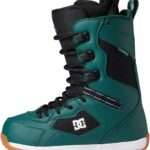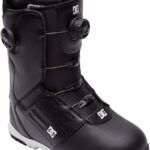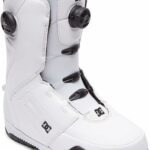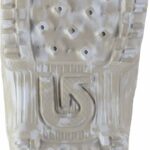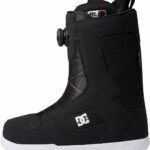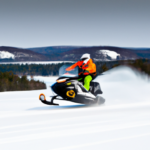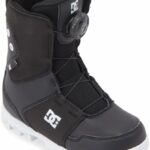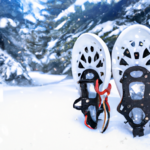Ever found yourself stuck in a deep, snowy forest, trudging with great difficulty through the thick, white blanket covering the ground? Don’t be caught unprepared again. This helpful guide titled “How To Make Snowshoes In The Forest” equips you with the knowledge and steps you need to make your own snowshoes right on the spot using materials found in the forest. Not only will you enhance your survival skills, but you’ll also be able to continue your path through the winter wonderland with more ease and less energy exhaustion.
Understanding the Need for Snowshoes
Before jumping right into how to make snowshoes in the forest, it’s imperative to understand the actual need for this essential winter accessory. These cleverly designed equipment are not just some fanciful display of traditional craftsmanship but serve a very practical and vital role in snow-laced terrains.
Significance of Snowshoes in Forest
The primary function of snowshoes is to enable you to move effortlessly across snow-covered grounds. Without them, your feet would sink into the snow with every step, making movement incredibly strenuous. Snowshoes provide flotation, making sure your weight is evenly dispersed over a larger area, preventing your feet from sinking in.
Mapping the Landscape for Snow Cover
It’s not just about strapping on snowshoes and taking off anywhere. Before setting out on a snowshoe escapade in the forest, it’s crucial to map out your route, observe the depth and type of snow cover. Understanding these factors ensures you select and tailor your snowshoes appropriately, thereby optimizing your ease of movement and safety.
Choosing the Right Material
Now that you’re clued up on the context behind snowshoe importance, let’s delve deep into the art of making them.
Understanding the Best Trees for the Task
Your first order of business when crafting your own pair of snowshoes is selecting the right tree. Sturdy and flexible woods such as ash, hickory, or birch are good choices. They provide the perfect balance between the strength necessary to bear your weight and the flexibility required to shape the frame.
Harvesting Sturdy and Flexible Branches
Once you’ve identified the right tree type, you’ll need to carefully select and harvest branches. These branches should be long, relatively straight, and free from knots or other defects, which may compromise their strength and flexibility.
Selection of Cordage
The next material to consider is the cordage for webbing. Traditionally, rawhide strips were used, but in modern times, many prefer nylon rope or paracord due to their durability and availability.
Creating the Snowshoe Frames
With the materials identified and gathered, it’s time to begin crafting the snowshoe frame.
Bending Sticks to Shape
The frame is essentially the skeleton of your snowshoe. Start by bending your chosen branches into a teardrop shape, making sure they’re sturdy, flexible, and not prone to cracking.
Connecting Frame Ends Securely
The ends of your branches will need to be securely fastened together. This can be achieved through various methods such as carving a notch into one end and inserting the other, or lashing them together with cordage.
Incorporating Crossbars for Extra Stability
For additional stability and a platform for your feet, incorporate one or two crossbars. These will prevent your foot from sinking through the webbing and help maintain the shape of the snowshoe.
Weaving the Webbing
Your snowshoe frame is now ready for the webbing – the part that provides the flotation.
Preparing the Cordage
Before you start weaving, prepare the cordage by cutting it into strips of appropriate length. If using rawhide, make sure it’s properly soaked for easy manipulation.
Basic Weaving Techniques
For the weaving part, start from the center of the frame, making sure to keep the cordage tight, and work your way out. The weave should be tight enough to support your weight but loose enough to provide adequate flotation.
Applying Tension Correctly
Maintaining proper tension throughout the webbing process is crucial for balancing the intricate mix of strength and flexibility required in a good snowshoe.
Attaching the Binding
Now, with the frames and webbing in place, we move on to securing the binding.
Designing a Foot Holder
The binding is essentially the foot holder that securely attaches your boots to the snowshoes. It can be as simple as a loop of cordage that goes around your foot and is secured to the frame.
Materials for Durable Binding
Selecting a durable material for your binding is vital as it will need to withstand the rigors of snowshoeing. Leather, nylon straps, or even paracord can be used here.
Securing Binding onto the Snowshoe Frame
The aligning of the binding is important. Make sure it’s near the snowshoe’s balance point, which is typically just behind the toe. This position allows for easier walking and less stress on your legs.
Refining the Snowshoe Design
The last stage in the snowshoe-making process is refinement. This is where you’ll adjust the size, work on shape, and enhance the snow grip to make it a perfect fit for your needs.
Adjusting Size of Snowshoes
The size of your snowshoes should correspond to your weight and the type of snow you’ll be encountering. Larger snowshoes are optimal for light, powdery snow, while smaller ones are better for compact or icy conditions.
Working on Shape for Easier Movement
The teardrop or oval shape is the most common snowshoe design as it offers the best combination of flotation and maneuverability. However, you may prefer a longer, narrower design for straight-ahead trekking or a broader, shorter design for navigating around obstacles.
Enhancing Snow Grip Features on Snowshoes
Various features can be incorporated to enhance the snow grip, such as cleats or crampons on the bottom of the snowshoes. These can dramatically increase traction and stability, especially on steep or icy terrain.
Safety Considerations
While learning to craft and use your snowshoes is exciting, never forget the significance of safety considerations.
Importance of Regular Inspection
Regularly inspecting your snowshoes for damage or wear is crucial. This includes checking the frame for any cracks, ensuring the webbing is not frayed or loose, and ascertain the binding is secure.
Repair of Damaged Parts
Visible damage or wear and tear on any part of your snowshoes should prompt immediately repaired. Damaged parts not only impair functionality, they jeopardize safety as well.
Proper Storage away from pests and Weather
When not in use, store your snowshoes in a cool, dry place, away from direct sunlight. Protect them from pests and harsh weather conditions that might damage the materials.
Practicing on the Snowshoes
Next, it’s time to practice and learn the proper techniques of walking on snowshoes. Remember, it’s quite different from normal walking!
Walk Techniques on Snow
Mastering how to walk in snowshoes requires practice. Start on flat terrain, walk with a slightly wider stance to accommodate your snowshoes and avoid the tips from crossing over.
Balancing on Snowshoes
Balancing can be challenging on uneven terrain or steep slopes. Use trekking poles to help maintain balance and distribute weight more evenly across your snowshoes.
As you gain confidence and skill, vary your practice terrain. Encounter shallow depths, deep powdery snow, uphill and downhill slopes to hone your snowshoeing skills and adaptability.
Snowshoe Maintenance and Care
Finally, to keep your snowshoes in top condition, regular maintenance and care are required.
Cleaning the Snowshoes
Clean your snowshoes after each use to remove any dirt or debris. Never leave snow or ice on your snowshoes as it might damage the material.
Treating the material to prevent Weathering
If you’ve used wood in your snowshoes, it’s a good idea to treat it with oil or varnish annually to weatherproof it. For synthetic materials, dry them out thoroughly before storage to prevent mildew.
Repairing damaged Webbing
Regularly check your snowshoe webbing for signs of wear. Damaged or worn-out webbing should be replaced promptly to maintain safety and efficiency of your snowshoes.
Survival Skills: Using Snowshoes in Forest
Your newly crafted snowshoes aren’t just a testament to your DIY abilities in the forest, they also play a vital role in winter survival.
Importance in Winter Survival
In frigid and snowy conditions, snowshoes can be the difference between life and death. They allow you to travel across the snow-blanketed forest with relative ease, enabling you to reach safety, hunt for food, or gather supplies.
Snowshoeing for Hunting and Travel
Hunting and travel in a snow-laden forest becomes significantly easier with snowshoes. They elevate your feet above the snow, enabling quicker, smoother movement and prevent unnecessary energy expenditure.
Extra Precautions During Play or Trek
If you’re snowshoeing for fun or for prolonged periods, remember to take regular breaks to avoid exhaustion. Also, bring along appropriate gear such as warm clothing, water, food, and a basic first-aid kit. Always tell someone where you’re going and when you’re expected to return.
Crafting snowshoes and snowshoeing is an integral part of outdoor survival skills, particularly advantageous in snowy terrain. Equipped with an understanding of why snowshoes are essential, selecting and harvesting right materials to craft them, finally maintaining and using them correctly, you’re all set to tread the snow in style and safety!
- What Snowboard Bindings Should I Get? - January 23, 2024
- What Size Screws For Snowboard Bindings? - January 23, 2024
- How To Snowmobile On Water? - January 23, 2024


